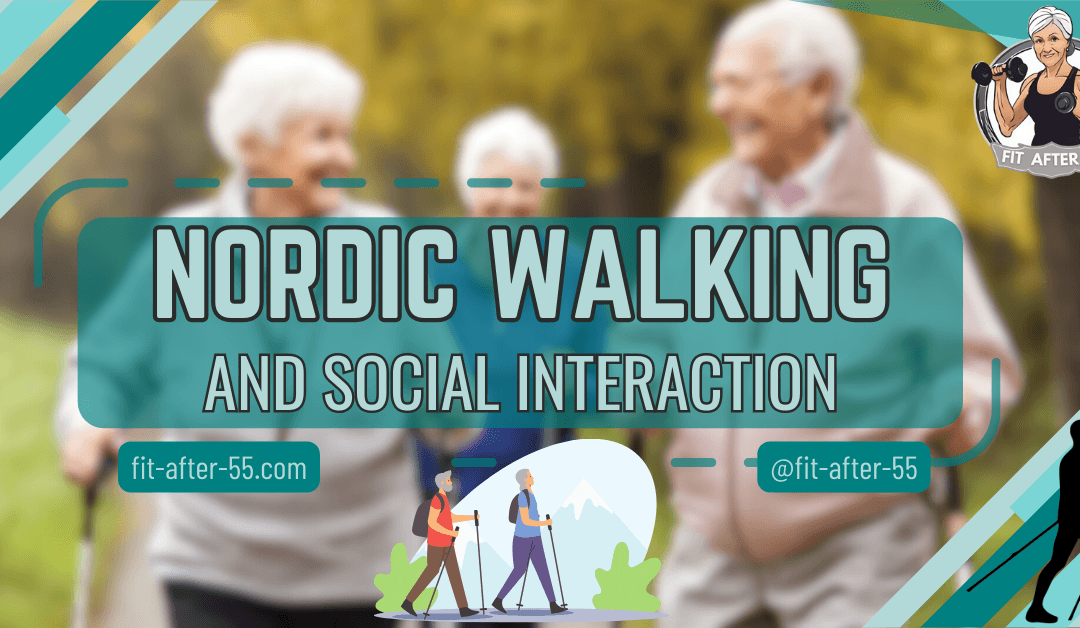The importance of Nordic Walking and Social Interaction cannot be overstressed: As the years gracefully accumulate, so does our wisdom. But amidst the silver strands and well-earned laugh lines, there’s a secret elixir that keeps our hearts young: connection. Yes, dear seniors, it’s time to swap stories over steaming cups of tea, share hearty laughs, and embrace the warmth of companionship. Because, you see, staying socially engaged isn’t just about swapping pleasantries—it’s a lifeline for our physical and mental health. So, let’s lace up those Nordic walking shoes, step out into the sun, and weave our lives together, one heartfelt chat at a time!
Remember, my dear friends, the path to vibrant aging is paved with laughter, camaraderie, and the joy of shared moments. Let’s walk it together!
Nordic Walking and Social Interaction: Enhancing Connections Through Fitness

Nordic walking is more than just a physical activity; it’s a dynamic way to connect with others and forge new friendships.
By combining the health benefits of walking with specialized poles, enthusiasts enjoy not only a full-body workout but also an opportunity to socialize.
This outdoor sport encourages you to engage with peers and nature simultaneously, offering a unique platform for interaction that goes beyond the confines of traditional exercise routines.
As you traverse through parks and trails, you’re likely to encounter fellow Nordic walkers, providing natural icebreakers and the chance to strike up conversations.
The accessibility of this low-impact exercise means individuals of all fitness levels can participate, broadening your circle of acquaintances.
Sharing goals, challenges, and the beautiful outdoors can quickly turn these new connections into meaningful friendships.
Furthermore, community events centered on Nordic walking offer additional venues to meet like-minded individuals, enhancing your sense of belonging.
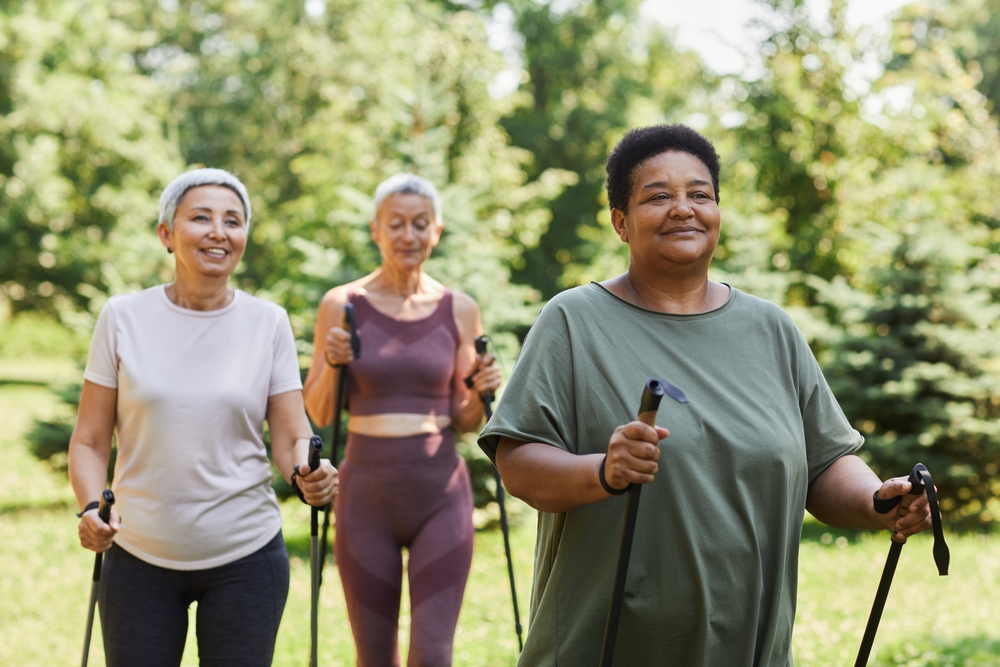
Pivotal Points:
- Nordic walking provides a blend of exercise and socializing opportunities.
- The sport is accessible to individuals of all fitness levels, enhancing social inclusivity.
- Community events contribute to a greater sense of involvement and connection.
Nordic Walking: An Overview
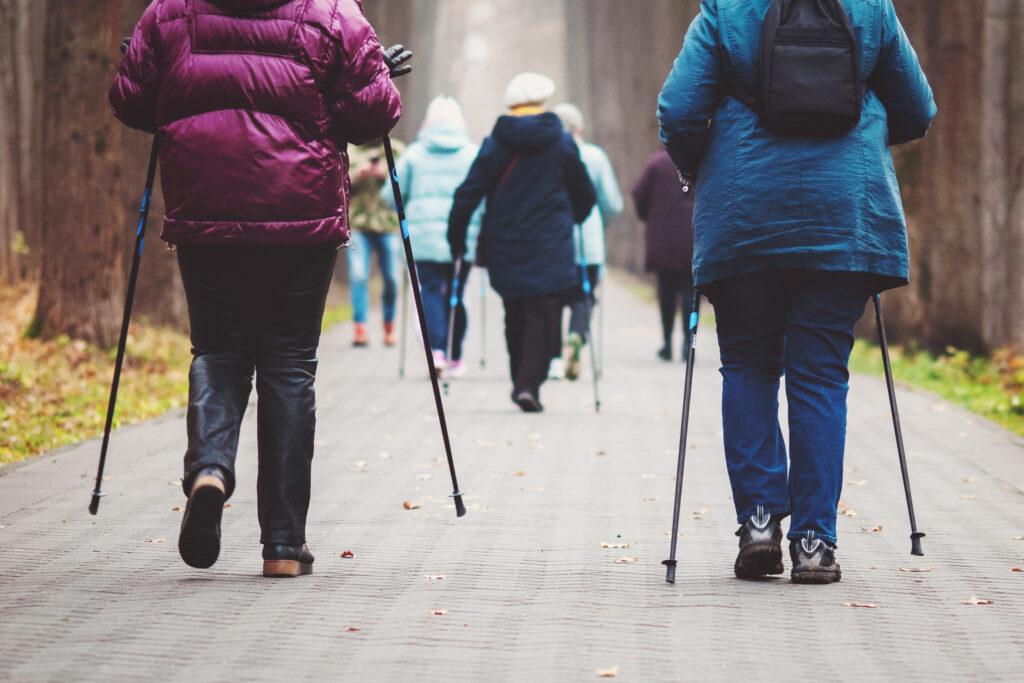
Nordic Walking, a full-body exercise easy to integrate into your routine, offers a symphony of health benefits and social interaction potential.
Definition and Concept
Nordic Walking is a form of brisk walking that utilizes specially designed poles to engage more of your muscles than traditional walking.
This activity enhances aerobic workout intensity, promoting better cardiovascular fitness and muscle endurance.
While you engage in Nordic Walking, the use of poles actively engages your upper body, which not only increases the caloric expenditure but also promotes upper body strength and coordination.
Historical Background
Originating from Finland as a summer training exercise for cross-country skiers, Nordic Walking has evolved since the 1930s. It gained formal recognition in the 1960s when it became a structured exercise with specific equipment.
Its popularity escalated in the 1990s when scientific studies confirmed its health benefits, making it an appealing fitness activity for a wider audience.
Current Trends in Nordic Walking
The practice of Nordic Walking has seen a notable uptick across various age groups and fitness levels due to its versatility and low impact nature.
You will find specialized Nordic Walking programs and groups that emphasize not only physical fitness but also social engagement.
The combination of accessible exercise and the opportunity to connect with fellow walkers makes it particularly appealing for bolstering social networks while simultaneously improving physical health.
Social Interaction in Physical Activities
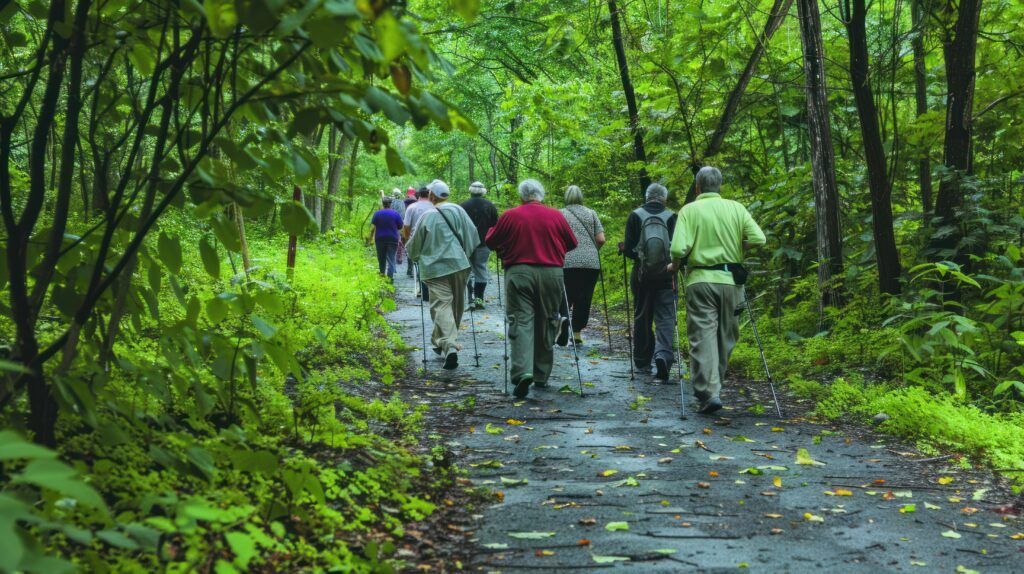
Physical activities can serve as an excellent catalyst for social interaction, providing participants with opportunities to build and enhance friendships.
The Role of Exercise in Socialization
When you participate in Nordic walking, a form of exercise that combines physical activity with social interaction, you’re not just improving your health. You’re also engaging in an activity that facilitates conversation and the development of social bonds.
This group-oriented sport encourages cooperation and community building, making it a powerful social tool.
Comparative Analysis with Other Sports
Compared to individual sports like running or cycling, Nordic walking tends to be more social.
While individual sports can offer solitude and personal reflection, they often lack the group dynamics that Nordic walking has.
Golf or team sports such as soccer also provide significant social interaction, but they often require specific skills or levels of competitiveness that can be barriers to participation.
Nordic walking, on the other hand, is accessible to many skill levels, fostering a more inclusive social environment.
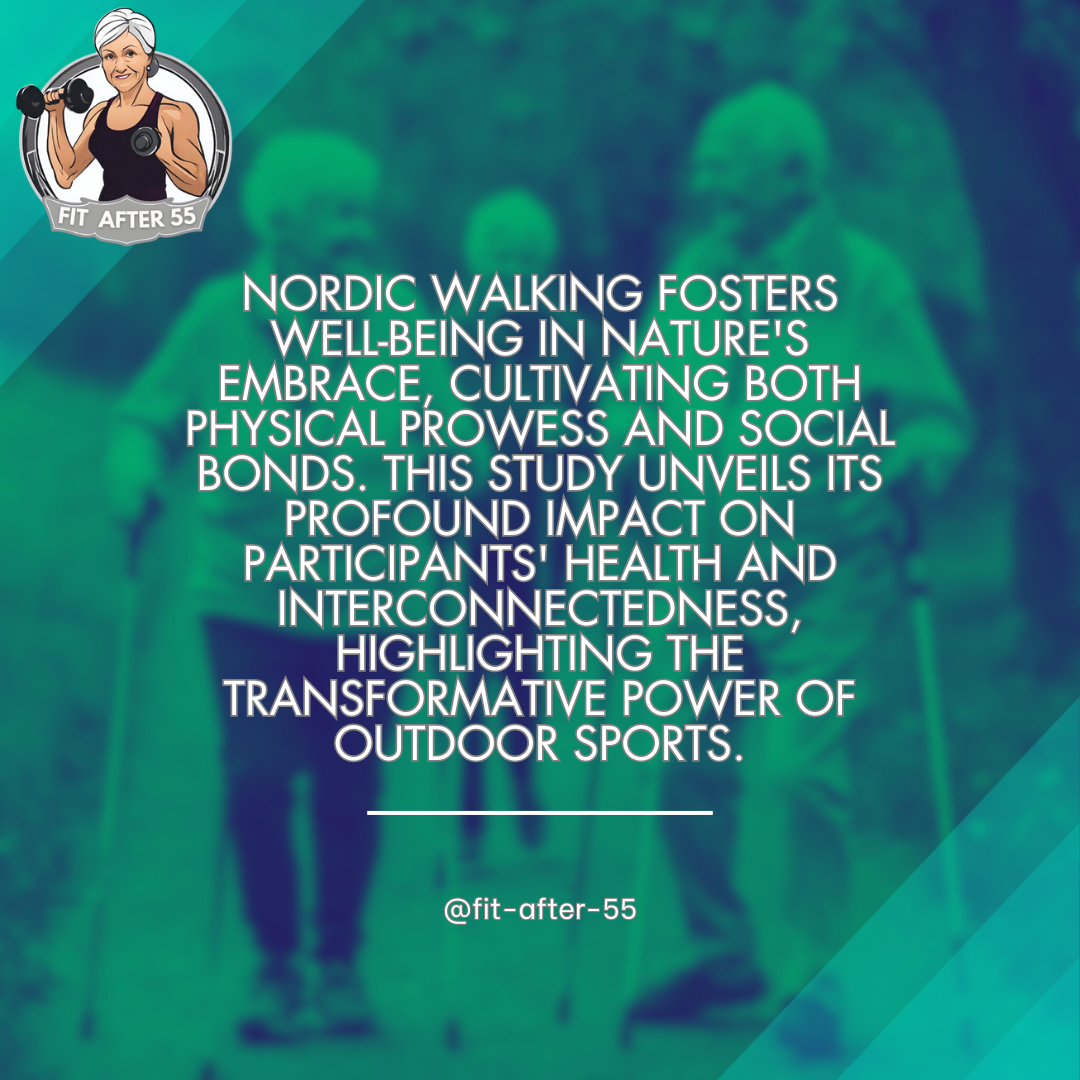
Equipment and Technique
Nordic walking enhances your walking experience and requires specific equipment and technique for optimal benefits.
Familiarizing yourself with the proper use of walking poles and mastering effective walking techniques can significantly impact your workout efficiency.
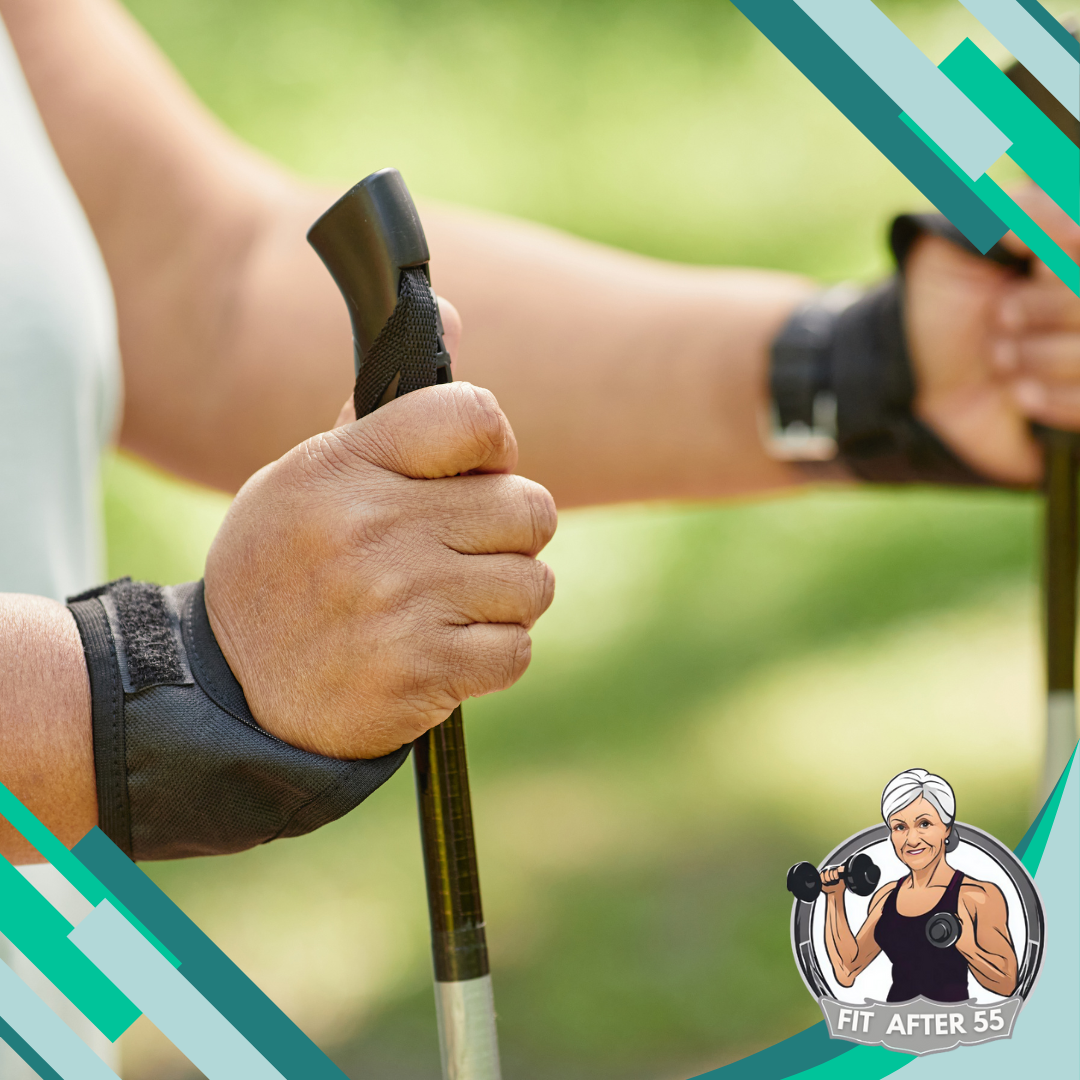
Proper Use of Walking Poles
To utilize walking poles correctly, adjust them to reach a height where your elbows form a 90-degree angle when gripping the handles.
Poles should have ergonomic grips and wrist straps to distribute pressure evenly.
When planting your pole, it should land parallel to your rear foot for maximum push-off support.
Techniques for Effective Walking
- Stride: Maintain a natural stride length; overextending can lead to discomfort.
- Coordination: Swing your arms opposite to your leg movement; right pole with left foot and vice versa.
- Posture: Keep your back straight and core engaged for a stable and powerful walking posture.
Apply consistent pressure on the poles with each stride, propelling yourself forward to work both your upper and lower body muscles more effectively.
Safety Measures and Considerations
Footwear: Choose shoes with good traction and support to prevent slips and strain.
Terrain: Begin on flat surfaces and gradually move to varied terrains as you become more comfortable with the technique.
Visibility: Wear reflective gear if walking in low-light conditions to ensure you are visible to others.
Building Friendships through Nordic Walking
When you engage in Nordic walking, you’re not just giving your body a workout; you’re also creating opportunities for social interaction and friendship development.
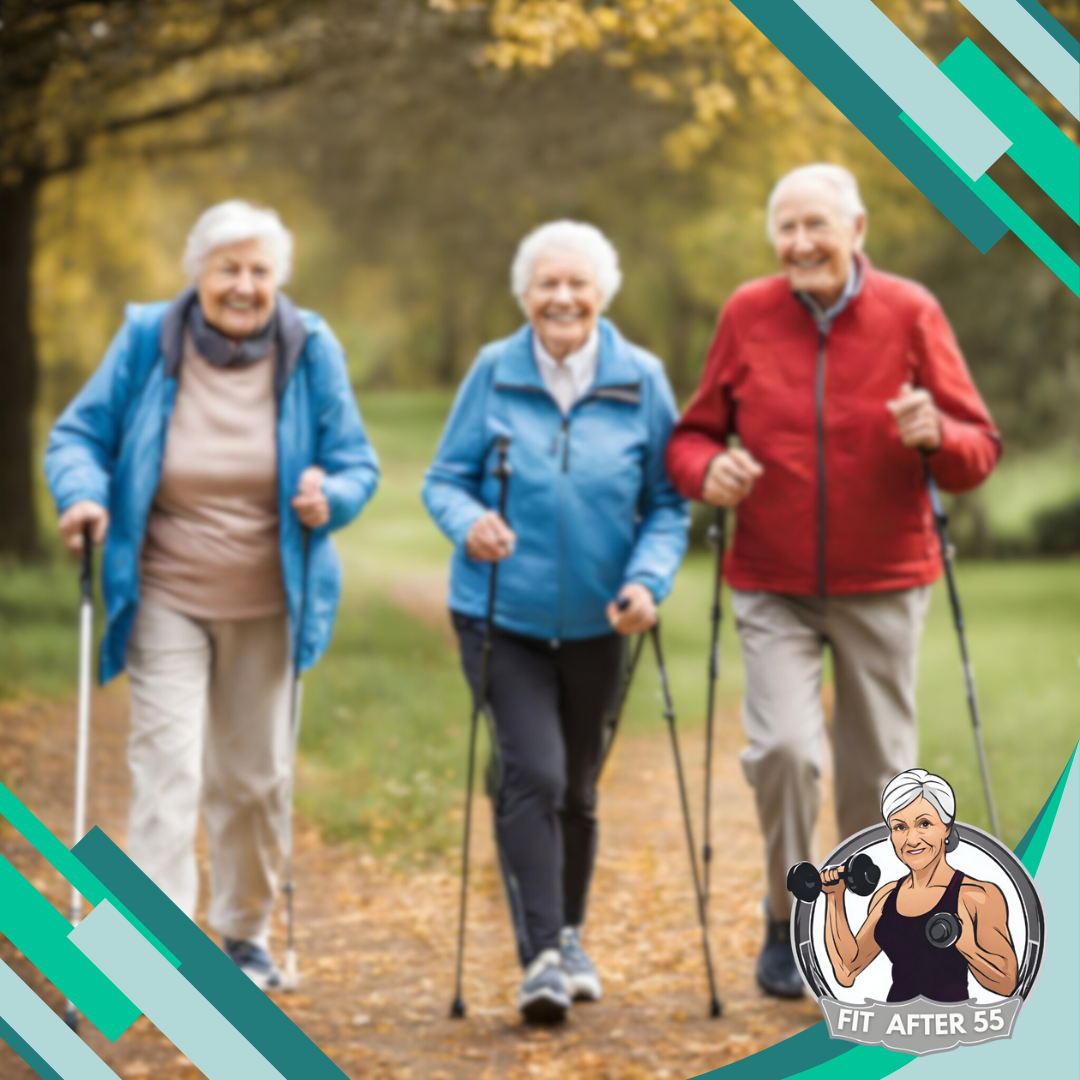
Organizing Walking Groups
Initiating or joining a Nordic walking group can be a significant first step towards building new friendships.
These groups often have a regular walking schedule, making it easy for you to plan and participate consistently.
Consistent attendance helps you get to know fellow walkers better.
You’re likely to find individuals with similar health goals, interests, and schedules, which can be the foundation for lasting friendships.
For example, a study on socio-environmental influences on Nordic walking shows how shared experiences in structured groups promote social bonds.
Social Benefits of Group Activities
Nordic walking in a group setting amplifies the social benefits of exercise.
Shared motivation and encouragement are not the only gains; the activity also facilitates engaging conversations, which can be both supportive and enjoyable.
When walking and talking in nature, you’re fostering connections that can lead to friendships.
The group dynamic can enhance emotional support, helping you to feel less isolated, particularly if you’re going through challenging times.
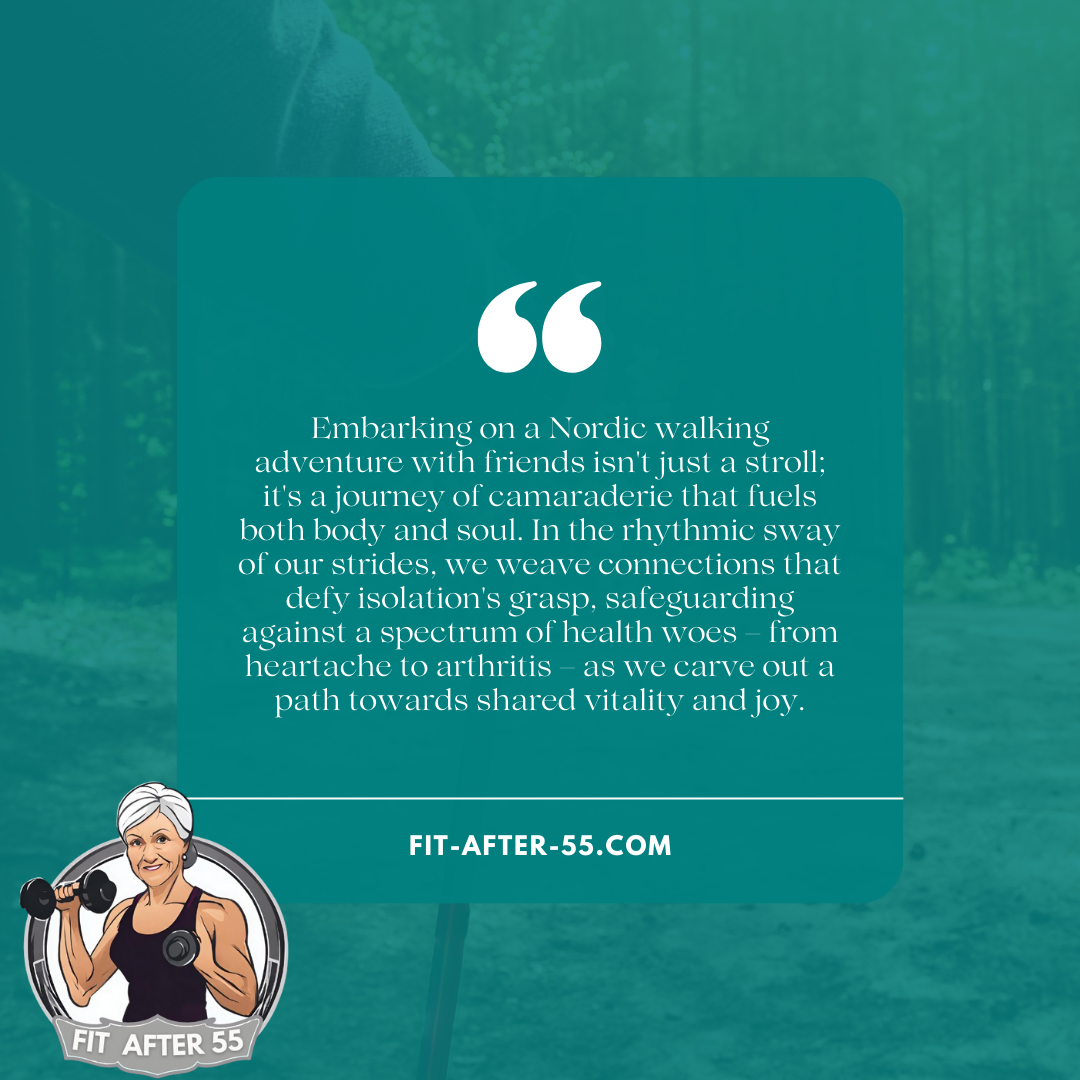
Psychological and Physical Benefits
Nordic walking is an effective exercise that brings together the benefits of increased physical activity with social engagement, leading to significant enhancements in both your mental and physical health.

Mental Health Enhancements
When you participate in Nordic walking, you’re not just improving your cardiovascular fitness; you’re also taking strides toward better mental health.
The activity has been linked to reductions in stress levels and improved mood.
Regular participation in Nordic walking can also lead to an increase in self-esteem and a decrease in symptoms of depression and anxiety.
This is partly due to the social interactions that naturally occur during group walks, which help foster a sense of community and belonging.
Physical Health Improvements
The physical health benefits of Nordic walking are extensive, as it is a whole-body workout that engages multiple muscle groups, leading to improved muscle strength and endurance.
Your core, arms, and legs all get a workout, resulting in increased overall fitness.
Furthermore, Nordic walking contributes to greater calorie burn compared to standard walking, aiding in weight management.
Research also suggests that this form of walking can increase cardiovascular fitness and contribute to lower blood pressure, benefiting your heart health.
Community Involvement and Events
Participating in Nordic walking not only promotes physical health but also forges social connections through active community involvement and various events.
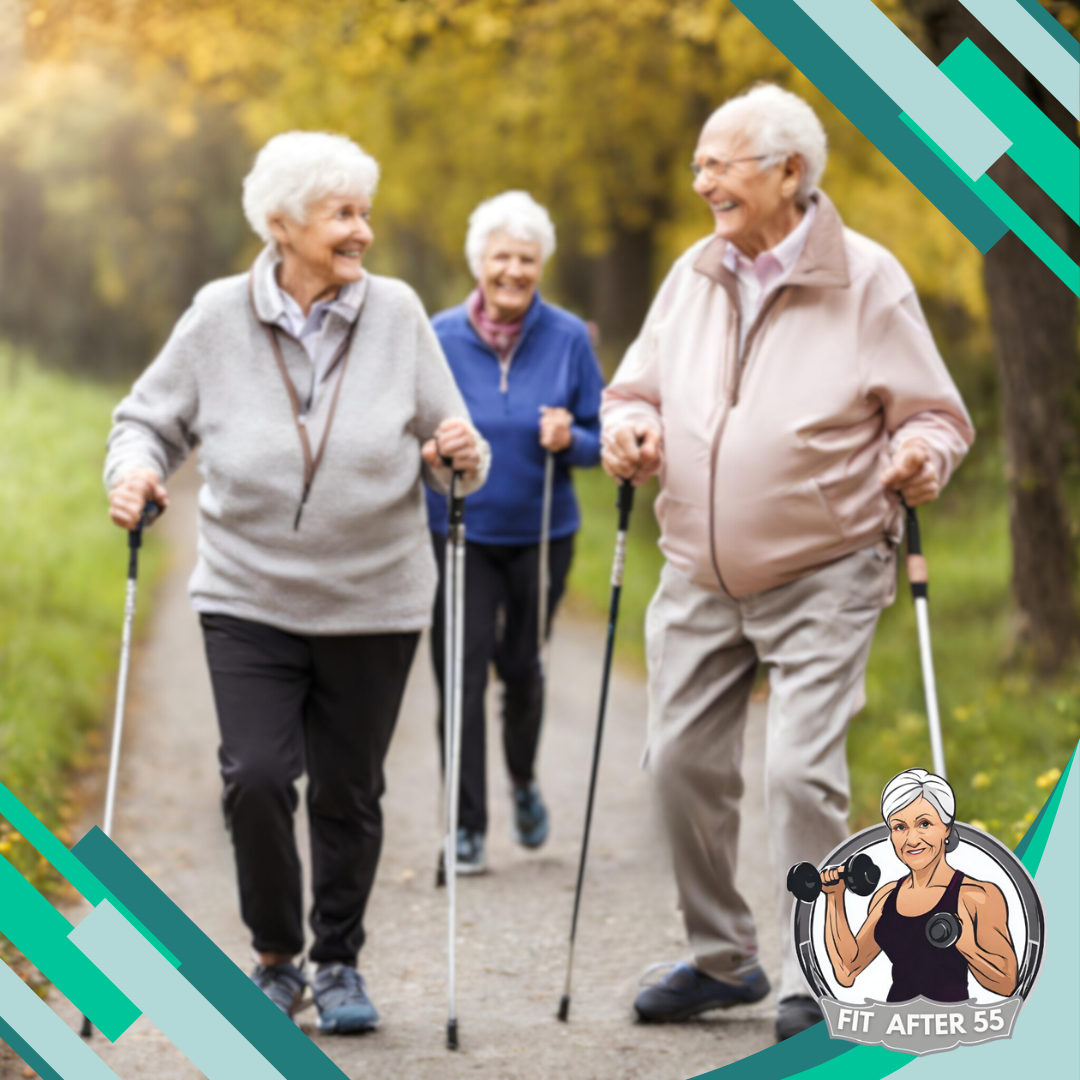
Local Nordic Walking Clubs
Local Nordic walking clubs provide a structured way for you to engage with fellow enthusiasts.
These clubs often hold regular walks, which allows you to integrate physical activity into your social calendar seamlessly.
For example, you may find clubs that meet weekly for group walks in nearby parks or trails, creating consistent opportunities for exercise and conversation.
Public Events and Charity Walks
Public events and charity walks expand your network beyond the local club scene, often bringing together a larger and more diverse group of participants.
These events, such as the Nordic walking sessions focusing on environmental influences on well-being, act as platforms for both raising awareness on causes and fostering community engagement.
Engaging in these walks can give you a sense of accomplishment through both the physical challenge and the charitable contribution.
Advancing Skills and Challenges
As you enhance your Nordic walking technique and endurance, you may look for ways to challenge yourself further and set new personal goals.
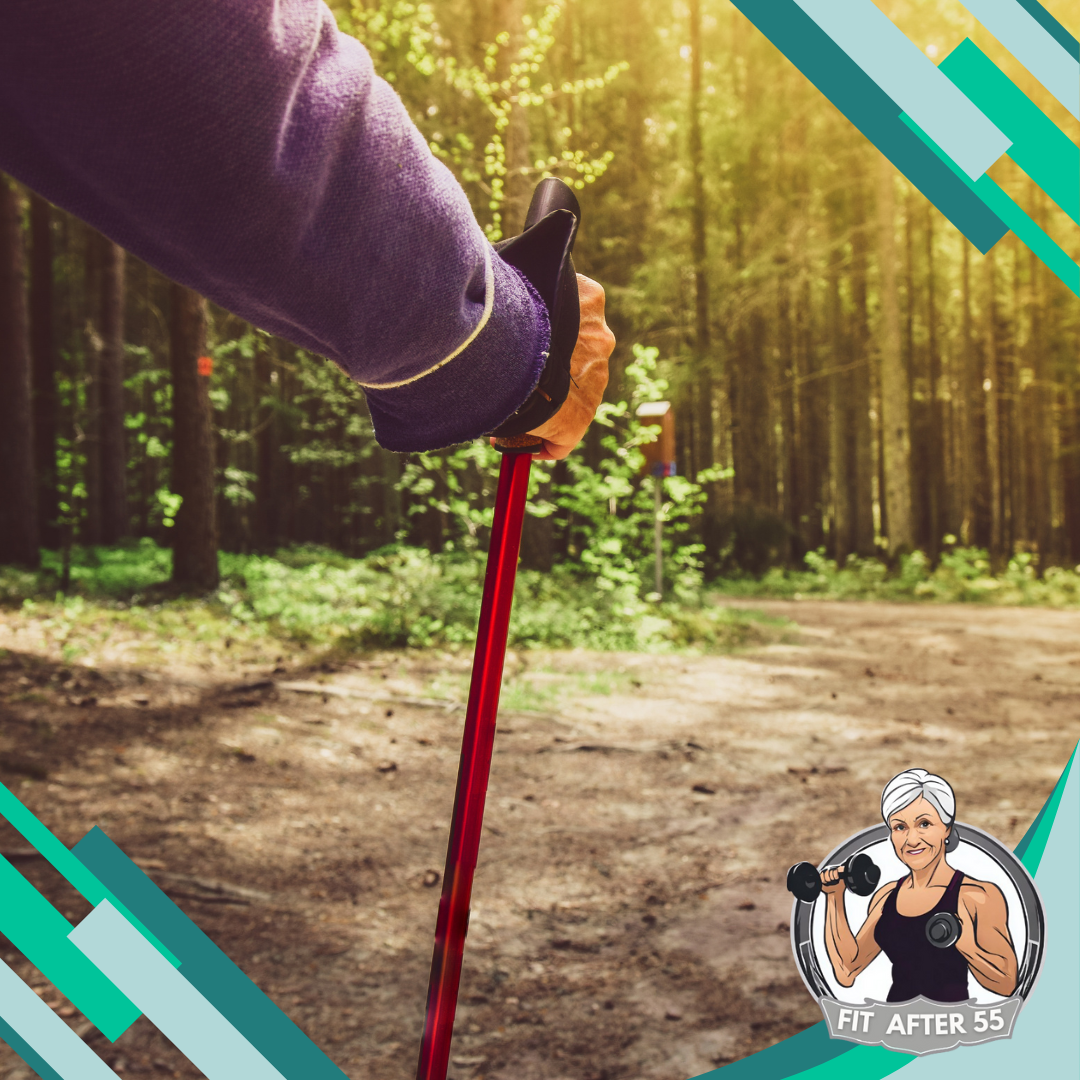
Progression and Goal-Setting
- Identify Your Current Level: Gauge your current abilities and set a baseline for your progress.
- Set Clear Objectives: Outline achievable and measurable goals, whether it’s increasing distance, enhancing speed, or improving technique.
- Monitor Your Progress: Keep a log of your walks, noting improvements and areas to work on.
Training for Competitions
- Find a Competition: Look for local or national Nordic walking events that match your skill level.
- Develop a Training Plan: Structured training regimens can prepare you for the demands of a competition, focusing on stamina and speed.
- Compete for the Experience: Whether or not you win, participating in competitions can be a rewarding way to measure your growth and connect with the Nordic walking community.
Nordic Walking and Social Interaction: A Recipe for Well-being
I want to extend a heartfelt thank you to all our readers. Your time and attention mean the world to us. I hope that after reading about the wonders of Nordic Walking and social interaction, you’re feeling inspired to give it a try yourself.
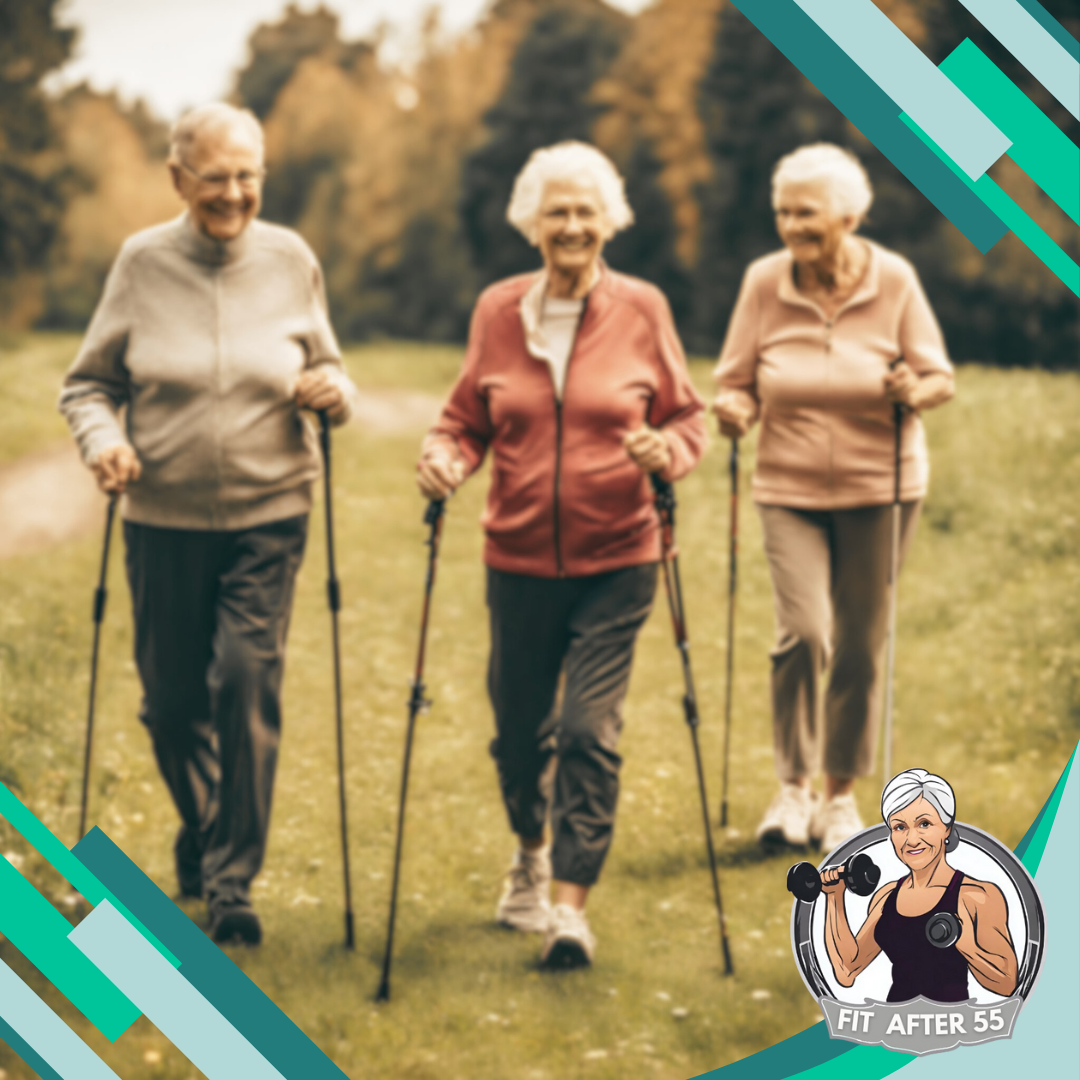
Personally, I’ve dabbled in Nordic Walking a few times, and I can attest to its invigorating effects. But more importantly, I’ve witnessed firsthand the transformative impact it has had on those who make it a regular part of their routine. So, why not join the ranks of enthusiastic Nordic walkers and experience the benefits for yourself?
Remember, it’s not just about the exercise—it’s about the connections you make along the way. So, grab those poles, gather your friends, and hit the trails. You won’t regret it!
Frequently Asked Questions
Hello again! In this section, you’ll find detailed some responses to the most common inquiries surrounding the social aspects of Nordic walking and its various physical and mental health benefits.
How does Nordic walking enhance social interaction and contribute to friendship formation?
Nordic walking often involves group sessions which can lead to strong social bonds between participants.
The activity encourages communication and shared experiences, facilitating friendship formation among walkers.
What are the disadvantages of practicing Nordic walking?
Potential disadvantages of Nordic walking include the initial cost of purchasing poles and the possibility of incorrect technique leading to muscle strain or injury. However, with proper training, these risks can be minimized.
What cognitive improvements can be expected from regular Nordic walking?
Regular participation in Nordic walking may lead to cognitive benefits such as improved memory, attention, and quality of life, particularly in domains of autonomy, social participation, and intimacy.
How do Nordic walking sticks benefit the user during the activity?
The use of Nordic walking sticks can provide stability and balance, reduce the impact on joints, and aid in building upper body strength due to the involvement of arm muscles.
Is it feasible to engage in Nordic walking while accompanied by a pet, such as a dog?
Yes, it is feasible for you to participate in Nordic walking alongside a pet. This can add an additional element of enjoyment and increase the likelihood of making it a regular part of your routine.
In what ways does physical education, including activities like Nordic walking, support social development?
Physical education through activities like Nordic walking supports social development. It teaches teamwork, communication skills, and fosters a sense of community among individuals.

